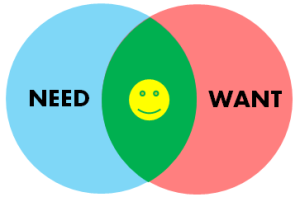As Additive Manufacturing (AM) technologies like 3D printing continue to gain attention worldwide, the number of people researching how these technologies can assist their manufacturing needs increases every day. Through my experience of manufacturing all of CryptoPrinting’s 3D prints – and through other professional AM experiences – I have had the opportunity to learn a lot and offer engineering advice to problem solvers of varying backgrounds. This post aims to orient newcomers by helping them understand some of the different AM and 3D printing applications currently available.
While there is a ton of hope and hype around AM, the quantity and variety of additive manufacturing processes and 3D printers currently available makes investigating the benefits of AM confusing for anyone not familiar with the field. Some articles will tell you that AM is the wonder-technology of the future, leading many to conclude that it will solve some need that they have. Realistically, when 3D printing XYZ does not immediately solve the problem at hand, researching it can easily distract you from achieving what you were really hoping to accomplish. This is particularly true if you don’t have your own 3D printer and want to see what other options are available for your AM needs.
Current 3D printers have limitations, including those of cost. Sometimes AM isn’t the answer, particularly if there is a another method, which may be cheaper, faster, simpler, or smarter for engineering reasons. Maslow’s Hammer (a.k.a The Law of the Instrument), or “the over-reliance on a familiar tool,” is worth considering here. For CryptoPrinting in particular, “engineering reasons” has translated into having consulted several potential customers toward other means of production because the process at hand was not suitable for their application. As a result, we would like to address the issue by providing the following 3D printing checklist:
3D Printing Checklist
If you are thinking about using 3D printing for some application (even if it’s not an order with us), please make sure that you’ve considered the following points:
1. Does your design really require 3D printing to make?
Artistic works might require it, but certain engineering projects can be handled in other ways.
- Do you want us to print a flat plate? You might be better served by buying a polycarbonate sheet instead.
- Do you want a 2×4 with holes in it? You’d be better off with a drill press and a block of wood.
2. Which printing process is most suitable for your application?
Each application has its own constraints and sometimes those constraints rule out certain means of manufacture:
- Does it need to be securely watertight? Don’t use ZCorps ceramic then, it will probably dissolve over time (I believe Shapeways lists this as natural or full color ‘sandstone’). You probably won’t want to use FDM/FFF processes (what we use) either, as some extra effort will probably be required to seal the bottom surface.
- Does it need to withstand a certain temperature? We are printing in thermoplastics which soften above 150C, so you’d better not want it to operate anywhere near there.
- Does it need to be metal? If so, hopefully you work for a major corporation, as the selective laser melting process (and other metals AM methods) are not currently priced for personal use like the polymer systems are. That being said, there are reports of metal parts cast using a lost PLA method, so the crafty among us might use this method to bootstrap to metal parts.
3. Given an acceptable process, is your design optimized for that process?
This is the hardest question to give a definitive answer to, and one which even educational institutions strain to incorporate into current curricula. Design for manufacture has long been a topic of interest, but it was generally focused on other methods (like injection molding) and subtractive processes (e.g. How do you design for CNC milling?), and there’s no textbook for designing for AM that I can point you to, so it’s worth thinking about a few key things:
- Overhang limitations vary from process to process and the precision and feature size limitations are important to consider as well.
- Most printers are actually capable of positioning accuracies smaller than their minimum feature size. For example, a RepRap can position to 0.1mm, but the nozzle is typically 0.35-0.5mm in diameter. In practice, this means that subtle surface features on solid bodies less than the nozzle diameter are retained, but free standing features (like little pillars for example), should be some multiple of the nozzle width to have any strength. Certain parts of artistic pieces may attempt to violate this rule, but their results will vary.
It is hoped that this post might help guide at least a few, as the general principles should still apply as Additive Manufacturing continues to grow and evolve. Please post your comments, observations, and suggestions below!

